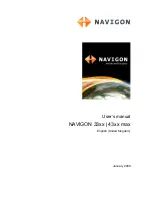When handling the STU/I, DV can become large quickly because one G of acceleration acts for up
to half a second giving 11 MPH’s change in speed.
In the chart below the impact is a low G force, long interval impact. The force measured at 100Hz
was 1.0G and the force measured at 10Hz was also 1.0G. Because of the long interval of time
during the impact, both filters measured the same G force and the DV rises smoothly to the net
change in speed.
Alarm Event
An impact ALARM can be sent to your email address, or text message cell phone (contact
your Lat-Lon representative to have this set up).
The ALARM event will give you the following information:
Time of the event
GPS coordinates, including nearest town
X axis G force and DV (in 10Hz and 100Hz filtering)
Y axis G force and DV (in 10Hz and 100Hz filtering)
Z axis G force and DV (in 10Hz and 100Hz filtering)
(The direction of the impact occurs by seeing which axes shows a higher value)
Impact Coordinates
Lat-Lon’s STU/I uses the following coordinate system
to report its impacts. When mounted on the end of a
car, the coordinates are co-aligned with the car’s
coordinates. (X= longitudinal, Y= lateral, Z= vertical)
Low-G, long interval impact
100Hz and 10Hz G's similar
0
0.5
1
1.5
2
2.5
0
0.05
0.1
0.15
0.2
0.25
0.3
Time (sec)
A
c
c
e
l
(G
)
a
n
d
D
e
lt
a
-V
(
M
P
H
)
Impact event data
1.0 G (100Hz)
1.0 G (10Hz)
2.1 MPH Delta-V
Delta-V
10Hz G
Actual and
100Hz G


















